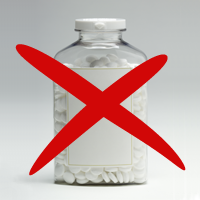Article
Exercise, not Drugs for ‘Gotta Go' Problems
Author(s):
A new set of guidelines from the American College of Physicians (ACP) advises physicians to prescribe exercises and behavioral therapy-not drugs-as first-line treatment for many patients with urinary incontinence (UI).

A new set of guidelines from the American College of Physicians (ACP) advises physicians to prescribe exercises and behavioral therapy—not drugs—as first-line treatment for many patients with urinary incontinence (UI).
“Sometimes our job as physicians is to tell patients not to take medications,” said Robert Centor, MD, Chair of ACP's Board of Regents and an internist at the University of Alabama’s Huntsville Regional Medical Center in Huntsville, AL.
The guidelines—based on a systemic review of existing studies done by the US Agency for Healthcare Research and Quality—were also published in Annals of Internal Medicine.
Urinary incontinence is a common problem among women, with severity ranging from bothersome to debilitating. Its prevalence increases with age, from an estimated 25% of women ages 14 to 21, about half of women ages 40 to 60, and 75% of women over age 74. At its most severe UI is blamed for 6% of nursing home admissions among older women. But often it manifests in a mild form called stress UI in which urine leaks when a patient sneezes, laughs hard, or coughs.
Faced with a barrage of television and print ads for “overactive bladder” remedies, even women with minor UI symptoms may ask their primary care doctors for prescription drugs. Overactive bladder covers a wide range of conditions. “I would love to see more women get treatment without medication,” Centor said
For stress UI the ACP recommends Kegel exercises to strengthen the pelvic floor muscles. The exercises are safe, often effective, and cheaper, Centor said.
The remedy appears to fall under the worth-a-try category. Though the panel found no studies directly comparing exercises to drugs, it did find one showing a Kegel regimen was 5 times as effective as taking no action to relieve UI.
For urgency UI, the guidelines call for bladder training, a behavioral therapy designed to extend intervals between urinating. If patients have both stress UI and urgency UI, the guidelines recommend both. In obese women with UI, weight loss also helps.
Only if these remedies fail should doctors get out their prescription pads, the guidelines recommend. It’s not that the drugs do not work—they are generally efficacious, the study found. But “many patients discontinue medication because of adverse effects,” Centor said. Cost, particularly when considered nationally, is also a factor. The available drugs, including generics, share a multi-billion-dollar market.
The researchers did not find any head-to-head studies comparing drugs to non-pharmacological therapies like exercises, nor did they try to fully evaluate surgical procedures or available non-surgical treatments such as the use of botulinum toxin.
For women with more severe UI (known as urgency incontinence), the ACP recommends first trying bladder training, a form of behavioral therapy that aims to increase the intervals between voiding. If that does not work, doctors should try medications, but should consider the possible side effects of several that are available, as well as their cost. Women with both conditions should try the exercises and the behavioral training.
But more severe UI may call for drug therapy. The guidelines panel reviewed studies comparing relative efficacy and side effects of several pharmaceuticals, including fesoterodine, tolterodine, oxybutynin, trospium, and solifenacin.One finding was that fesoterodine seemed to work better than tolterodine for urgency UI but overall in urgency UI, the drugs were equally effective. The panel found solifenacin had the lowest risk for discontinuation due to adverse effects, and oxybutynin had the highest. Clinical outcomes did not seem to be affected by patients’ age, weight, or race.
The review was based on English language studies published from 1990 through Dec. 2013.


